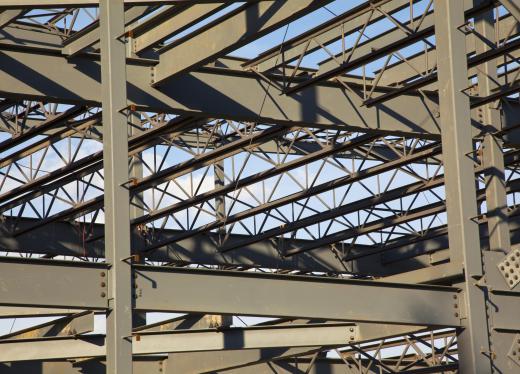Mild steel is the least expensive of all steel and the most common steel used. Used in nearly every type of product created from steel, it is weldable, very hard and, although it easily rusts, very durable. Containing a maximum of 0.29% carbon, this type of steel is able to be magnetized and used in almost any project that requires a vast amount of metal. Its structural strength prevents it from being used to create load-bearing girders and structural beams.
Many of the everyday objects that are created of steel are made using mild steel, including automobile chassis, motorcycle frames, and most cookware. Due to its poor corrosion-resistance, it must be painted or otherwise protected and sealed in order to prevent rust from damaging it. A light coat of oil or grease is able to seal this steel and aid in rust control.

Unlike high-carbon steel, mild steel is easily welded. The properties of the steel allow the electrical current to travel through the metal without distorting the makeup of the material. Some types of high-carbon steel, such as stainless steel, require special techniques in order to properly weld the material. Being less brittle than high-carbon steels, the mild variant is able to flex and give in construction projects where a higher-carbon version could simply break.

Most of the pipeline in the world is created using mild steel. This allows the pipe to not only be easily welded into place, but also lets the pipeline flex and avoid cracking and breaking under pressure. The corrosive properties of the steel pipeline mean that it must be properly sealed through painting or a process often used on pipelines that involves wrapping the pipe with a corrosive-resistant material.

Often in very cold climates, a warming type of insulating material is wrapped around the pipeline. This material helps keep the cold inside the pipe running smoothly. The wrap also prevents the soft mild pipe steel from becoming brittle and cracking. The constant expansion and shrinkage due to cold and warmth cycling in the pipe could create structural integrity problems, but these are held in check by the insulating wrap. On a much smaller scale, household pipes can be prevented from becoming cold and breaking by the use of electrical heating tape.
